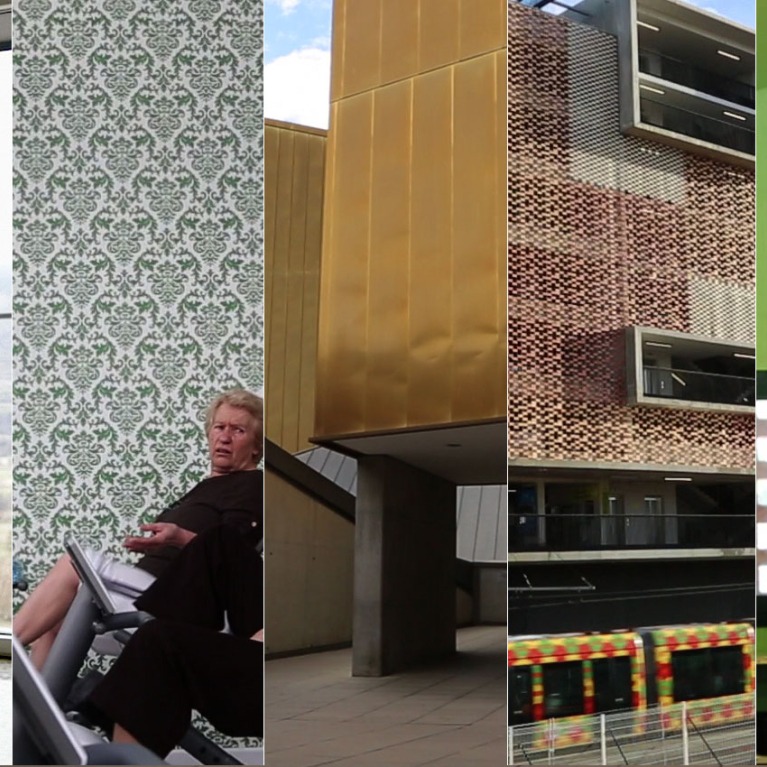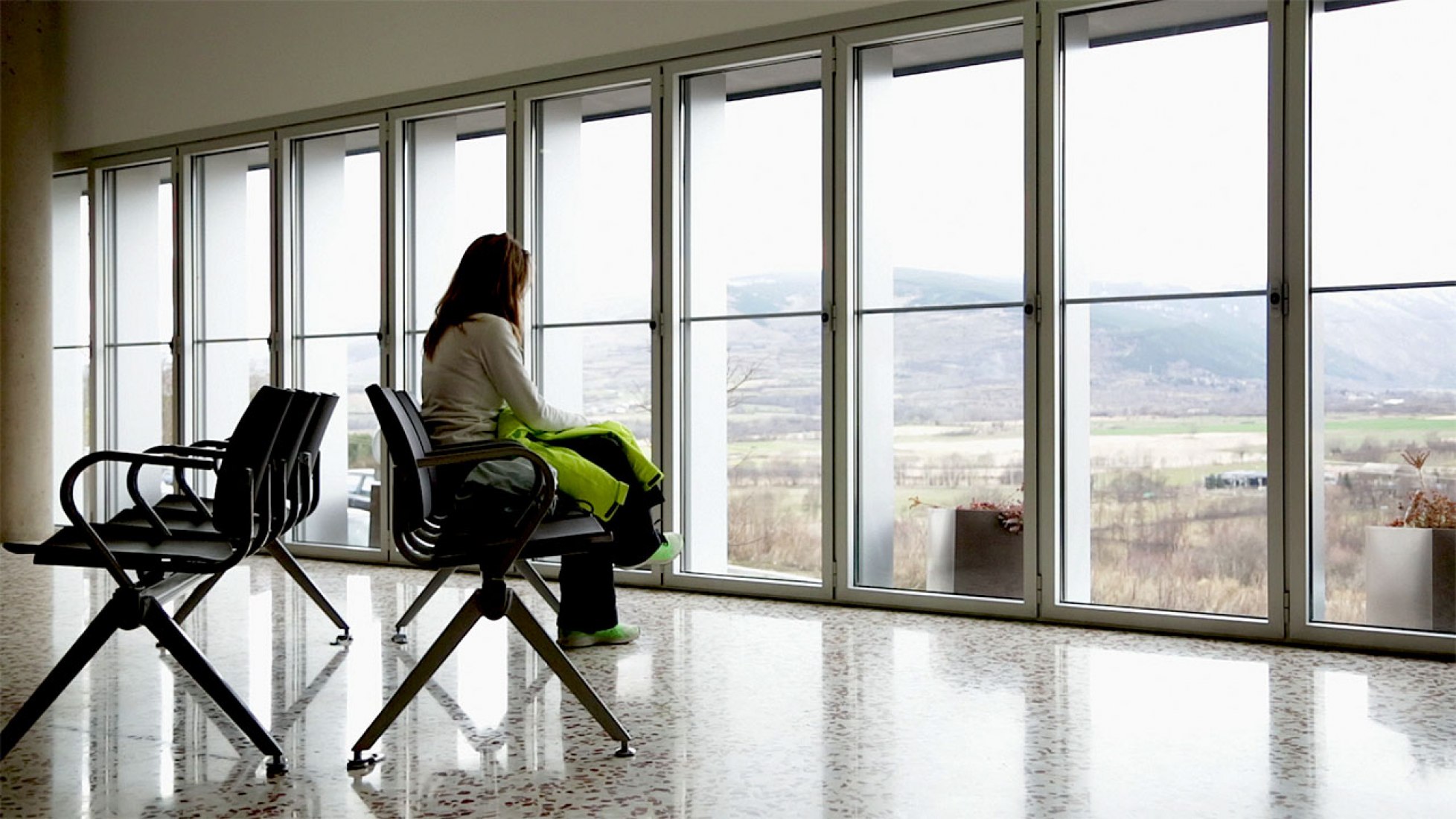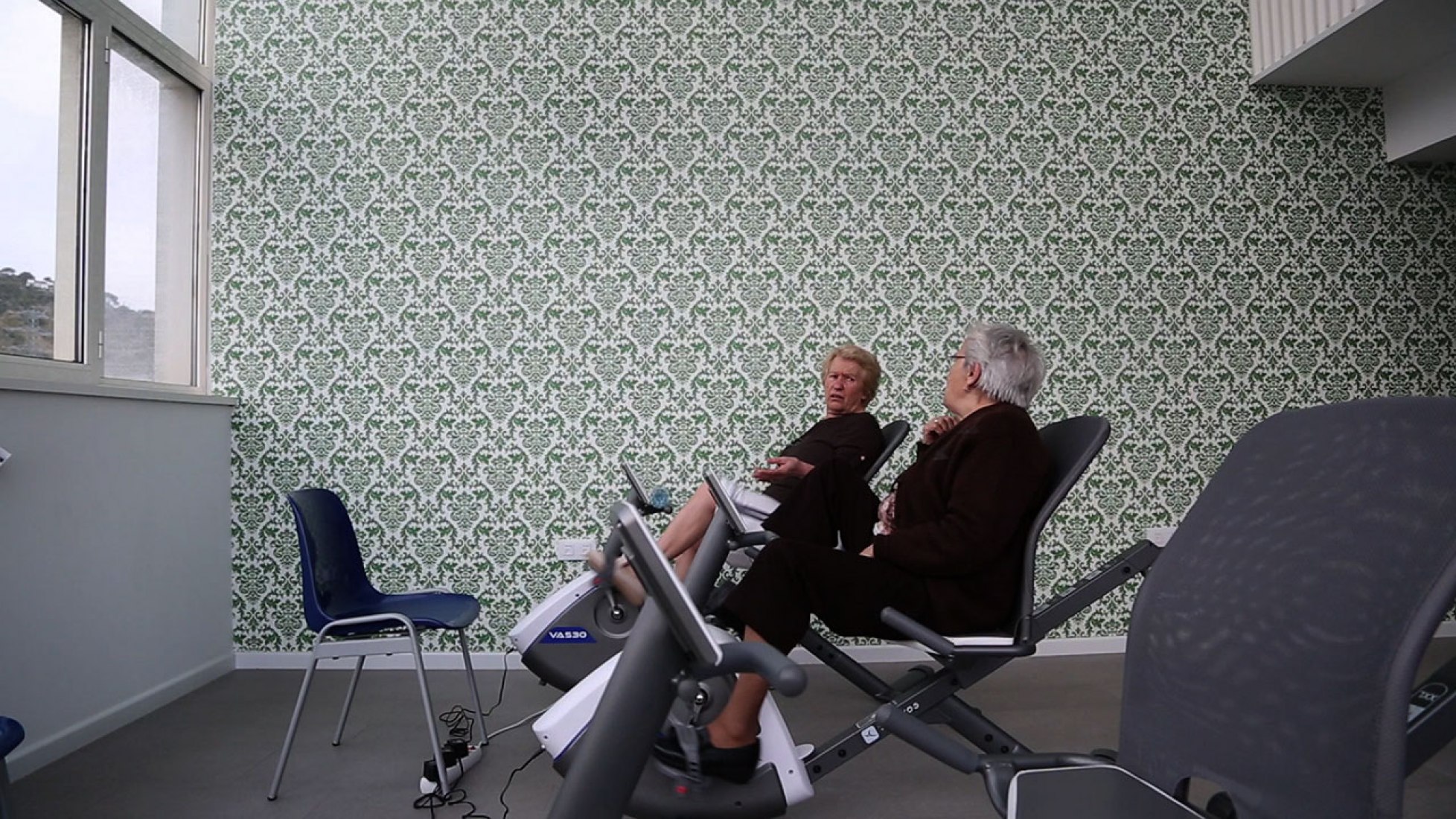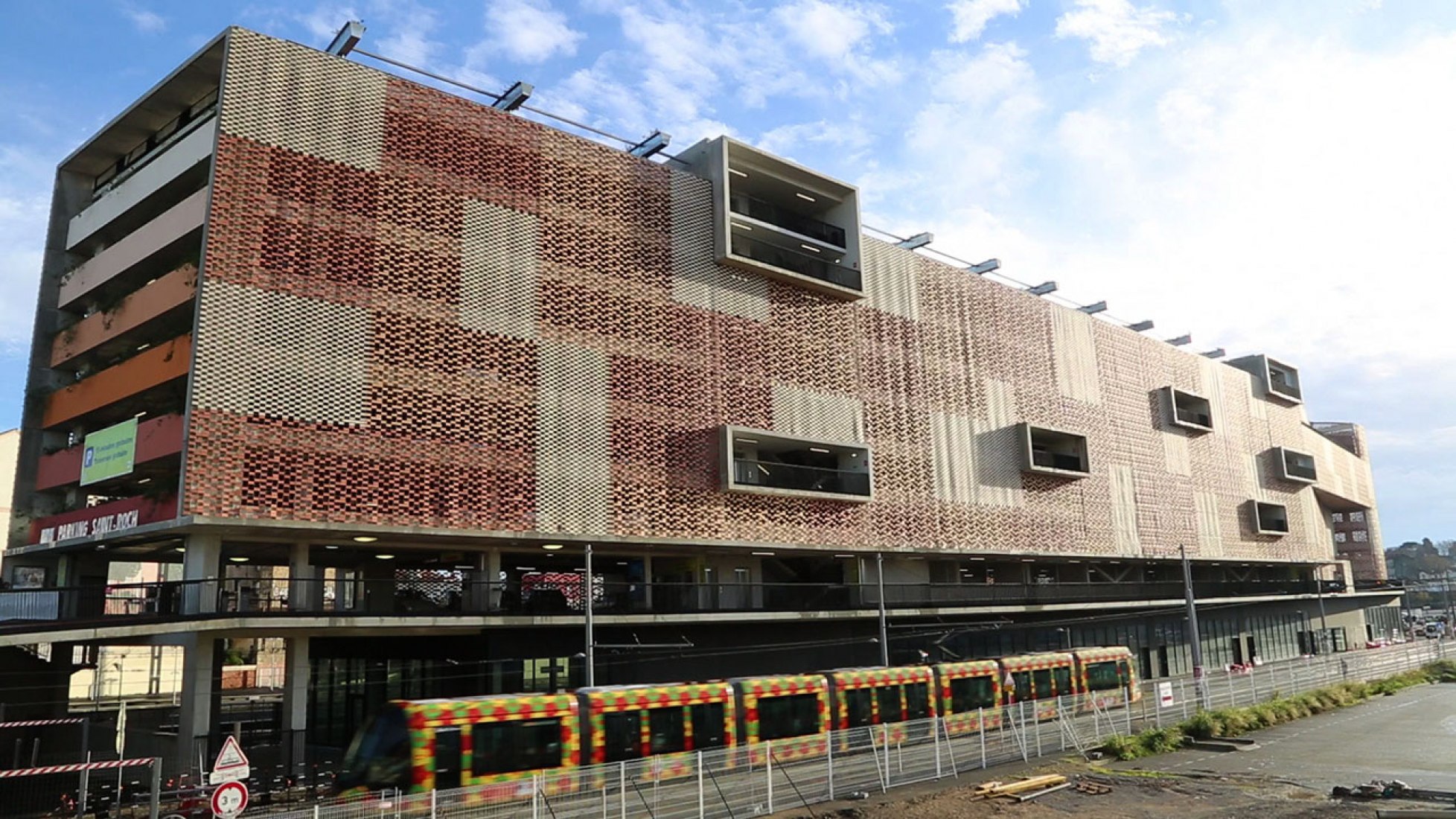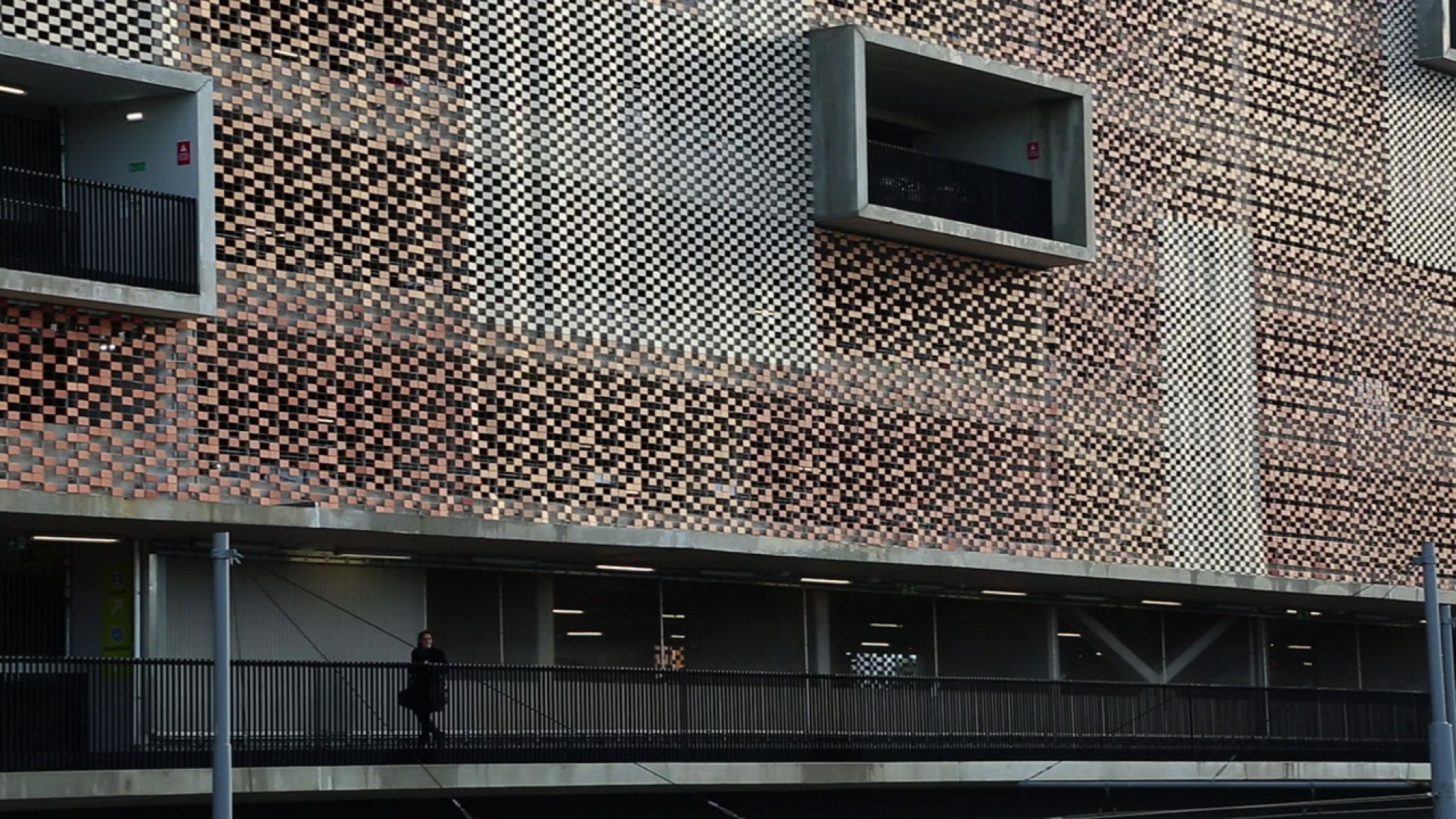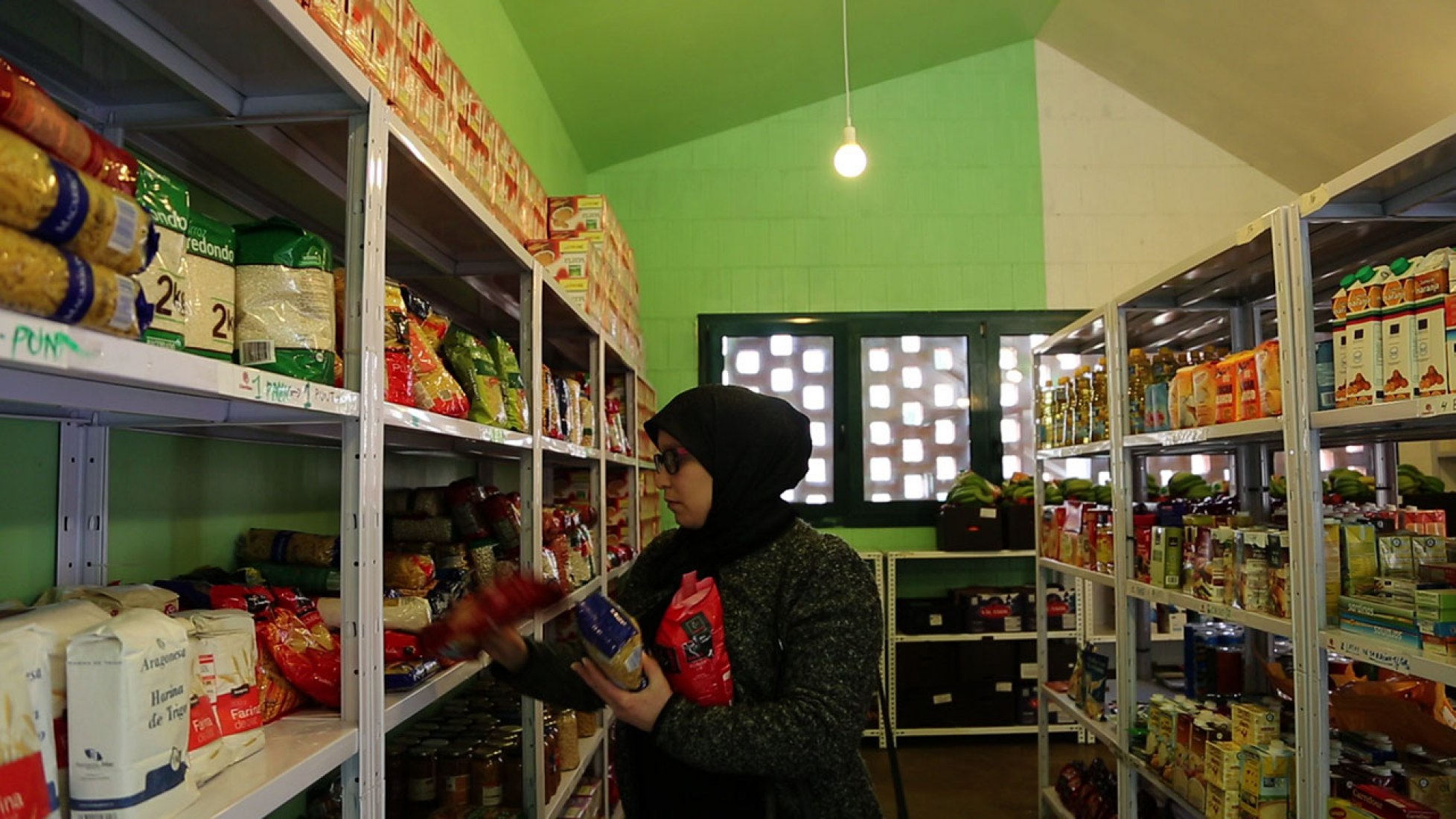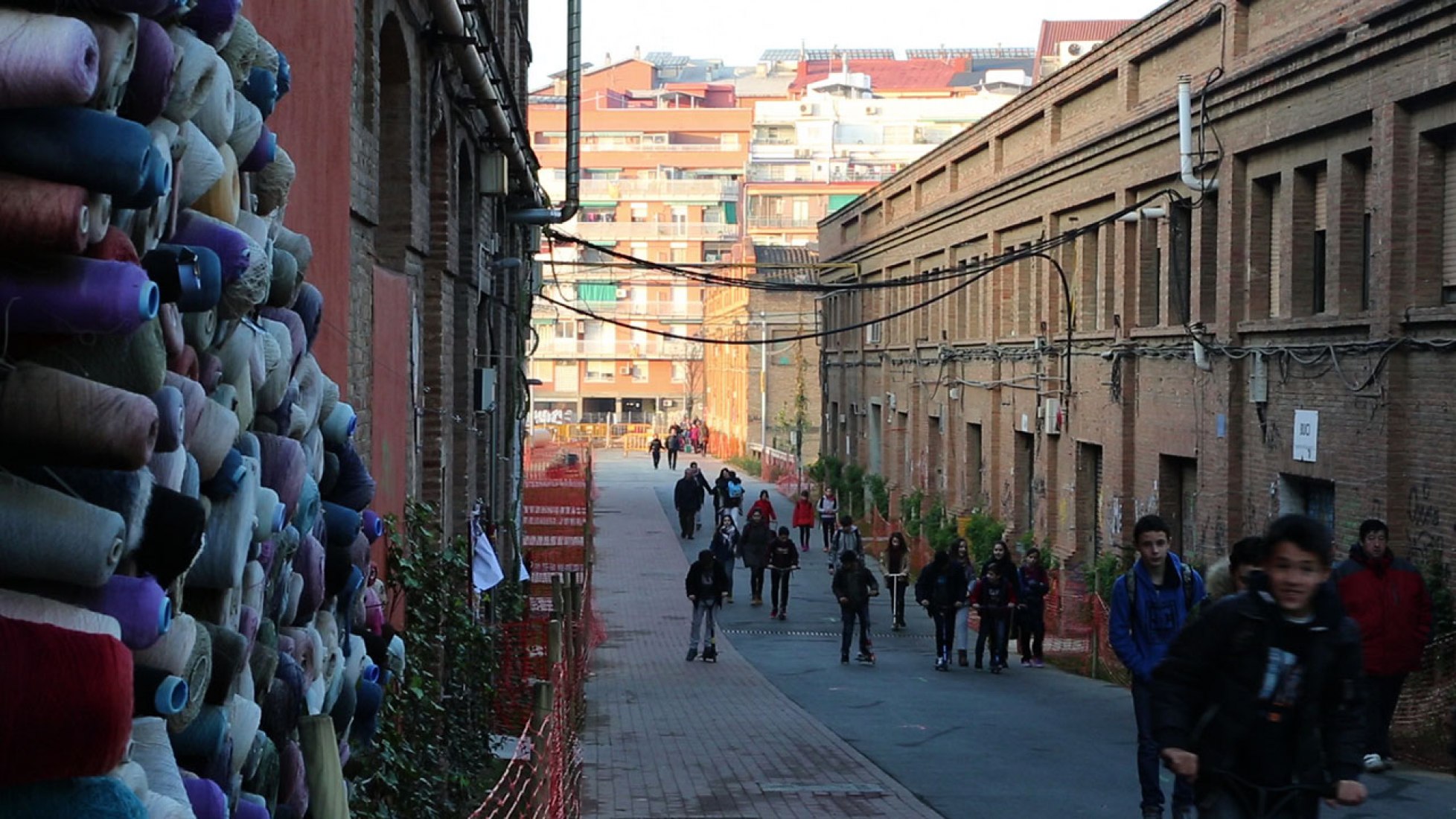The Institut Ramon Llull presents the Collateral Event “Aftermath_Catalonia in Venice. Architecture beyond architects” within the framework of the15th International Architecture Exhibition that the director Alejandro Aravena has titled “Reporting from the Front”.
The project is curated by the architects Jaume Prat and Jelena Prokopljević and film director Isaki Lacuesta. It uses audiovisual installations to spotlight seven cases of public architectural interventions, which were chosen as virtuous examples of architecture that improves the user’s relationship with the urban, social and natural environment.
The diverse installations – including a hospital, a car park, a theatre and a natural area – let visitors view how architectural space enables users to enjoy public places as conscious members of society while they go about their day-to-day routines. The project’s purpose is to stimulate the public’s reaction, providing a cause for reflection. Consistently, the exhibition aims at involving visitors with a sensory approach to the artistic installation where a specific case is projected on diverse translucent vitreous surfaces that reflect the complexity of interactions between people, architecture and society. The public has the dual role of visitor and editor and as such it can browse through the exhibition and carry out the final “editing” on its own.
All the architectural works included in the audiovisual installations are public interventions by Catalan architects carried out during the last ten years.-
The project is curated by the architects Jaume Prat and Jelena Prokopljević and film director Isaki Lacuesta. It uses audiovisual installations to spotlight seven cases of public architectural interventions, which were chosen as virtuous examples of architecture that improves the user’s relationship with the urban, social and natural environment.
The diverse installations – including a hospital, a car park, a theatre and a natural area – let visitors view how architectural space enables users to enjoy public places as conscious members of society while they go about their day-to-day routines. The project’s purpose is to stimulate the public’s reaction, providing a cause for reflection. Consistently, the exhibition aims at involving visitors with a sensory approach to the artistic installation where a specific case is projected on diverse translucent vitreous surfaces that reflect the complexity of interactions between people, architecture and society. The public has the dual role of visitor and editor and as such it can browse through the exhibition and carry out the final “editing” on its own.
All the architectural works included in the audiovisual installations are public interventions by Catalan architects carried out during the last ten years.-
Environmental rehabilitation of the Llobregat River, Barcelona (2007-2015) by BATLLE I ROIG Arquitectes (Enric Batlle i Joan Roig).
Cerdanya cross-border hospital in Puigcerdà (2007-2012) by the architects Brullet-Pineda (Manuel Brullet Tenas, Alfonso de Luna Colldefors, Albert de Pineda Álvarez).
Torre Júlia. Assisted housing for seniors (2004-2011) in Barcelona, by Pau Vidal, Sergi Pons, Ricard Galiana.
Atlàntida Performing Arts Centre (2004-2010) in Vic, by Josep Llinàs, Josep Llobet, Pedro Ayesta, Laia Vives.
Saint-Roch parking garage (2012-2015) by ARCHIKUBIK (Marc Chalamanch, Miquel Lacasta, Carmen Santana).
Food distribution centre-CAMPCLAR (SDA) (2014) by NUA Arquitectures (Maria Rius, Arnau Tiñena, Ferran Tiñena).
Can Batlló (2011 under construction) in Barcelona, by Can Batlló Community, LaCol - architects- cooperative.
Cerdanya cross-border hospital in Puigcerdà (2007-2012) by the architects Brullet-Pineda (Manuel Brullet Tenas, Alfonso de Luna Colldefors, Albert de Pineda Álvarez).
Torre Júlia. Assisted housing for seniors (2004-2011) in Barcelona, by Pau Vidal, Sergi Pons, Ricard Galiana.
Atlàntida Performing Arts Centre (2004-2010) in Vic, by Josep Llinàs, Josep Llobet, Pedro Ayesta, Laia Vives.
Saint-Roch parking garage (2012-2015) by ARCHIKUBIK (Marc Chalamanch, Miquel Lacasta, Carmen Santana).
Food distribution centre-CAMPCLAR (SDA) (2014) by NUA Arquitectures (Maria Rius, Arnau Tiñena, Ferran Tiñena).
Can Batlló (2011 under construction) in Barcelona, by Can Batlló Community, LaCol - architects- cooperative.
The architecture projects included in the exhibition were all implemented during the gloomiest period of the country’s economic crisis when new needs emerged, which could only be met by an inclusive architectural strategy that was very sensitive towards the inhabitants and the environment. The projects in fact prove that architecture responded effectively to specific needs via common features such as social enhancement, new tools that improve interaction between people and their environment, resource optimization, appreciation of community values, and improvement of conditions of use.
The exhibition also proposes a catalogue for online download to go in depth in the concepts behind the project, a web-doc that includes interviews with the creators and the teams involved in the seven cases, and models and details regarding the creative and building process.
"The purpose of Aftermath_Catalonia in Venice. Architecture beyond architects is to investigate the value of the architectural intervention from the perspective of its use, when the architects who created it are no longer present. All the cases chosen are public interventions that integrate the natural, urban and human environment, extending the architectural functionality into a common good. They reflect an architecture sensitive to the user’s requirements, which helps us reassess what we consider architecture today. They are spaces that oblige us to review certain outlooks, which envisage architecture as a univocal solution or an imposition on the user”. Said the curators.
The project presented by the Institut Ramon Llull was chosen by an independent selection jury chaired by the architect Carme Pinós, on the basis of open competition.
